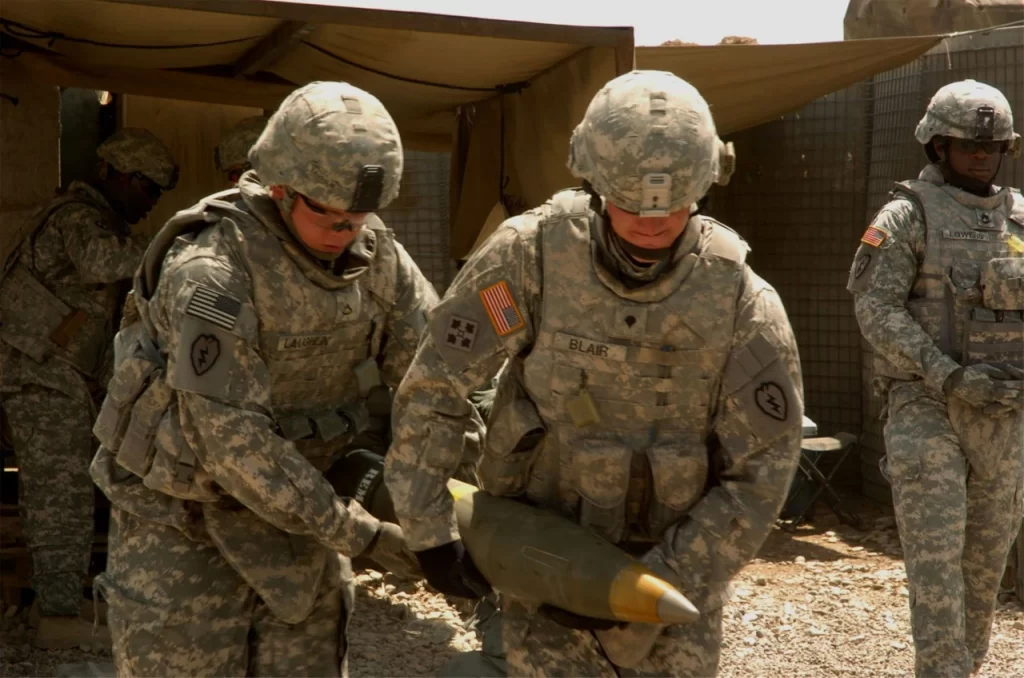When the American M142 HIMARS multiple launch rocket systems were first supplied to the Ukrainian front, the perspective of the Western media towards them was similar to that of a different “wonder weapon” that would most likely “alter the balance of power” on the battlefield. In the beginning, things were as they appeared to be: the HIMARS successfully hit ammo stores and fuel and lubricant supplies in the Russian rear, which thwarted plans to transport equipment and ammunition to the line of contact.
But as time went on, the impact of this MLRS on the progression of the conflict began to lessen. First, the air defence system began to adjust to new dangers, and more recently, it came to light that the Russian air defence system received updated software, which is why HIMARS missiles are now seen as “normal targets.”
Upgraded software
According to RIA Novosti, the Russian air defence forces have been given new software that makes it simple to intercept HIMARS MLRS missiles. The information was disclosed by the commander of one of the units based in the Zaporizhzhia direction. The paper did not specify the exact anti-air missile system used but is speculated to be the Buk-M3 system.
According to the commander, at first, they did not grasp what it was, but at this point in time, they are now freely working on HIMARS. The troops requested a new programme, so HIMARS are now treated like any other target. “We see freely, observe and destroy without problems,” he said.

The multiple launch rocket system known as HIMARS (High Mobility Artillery Rocket System) was developed in the United States by BAE Systems and Lockheed Martin between 1996 and 2000, and production of the system has been ongoing since 2003. It operates on the platform of a three-axle wheeled chassis FMTV of the United States Army, can carry either six rockets or one ATACMS operational-tactical ballistic missile, and has a maximum effective firing range of up to 80 kilometres for specific types of ammunition.
Shooting down Excalibur ammunition
The Russian forces managed to shoot down the American Excalibur 155 mm ammunition, considered invulnerable to air defence.
The Russian air defence system successfully intercepted and destroyed American Excalibur ammunition while in flight for the first time. It was believed up until very recently that Russian air defence systems were not at all prepared to deal with guided or unguided artillery projectiles. This belief was dispelled fairly recently, however. Now, the Russian military has prevented an American guided shell from reaching its intended target by intercepting the weapon as it approached the area.
“An Excalibur guided artillery shell was intercepted in the area of the settlement of Miropolye, Sumy region,” reported the Ministry of Defense of Russia this week.
It is important to point out that the primary obstacle in successfully intercepting such ammunition is the small size and high speed of the projectiles. In particular, the shells have a length of less than one metre, and because of the peculiarity of the trajectory, the probability of their detection is extremely low. There is currently no evidence to suggest that the opponents have ever stopped such ammunition.
The Excalibur projectile is a true precision weapon co-developed by Raytheon Missiles & Defense and BAE Systems Bofor. It has an impact distance of fewer than two metres from the target. The Excalibur weapon offers accurate first-round effects at all ranges and in any weather, in contrast to guiding systems that provide “near precision.” This weapon system also increases the range of the .39-caliber artillery to forty kilometres, .52-caliber artillery to fifty kilometres, and.58-caliber artillery to seventy kilometres.
The precision offered by the Excalibur projectile allows for a significant reduction in the amount of time, money, and burden associated with the logistics of deploying other types of artillery weapons. On average, at least ten conventional munitions are required to accomplish what a single Excalibur weapon can.
It has been determined that the Excalibur munition is compatible with every howitzer it has been tested with. This weapon has passed all of the necessary qualification tests for use in various systems, including the M777, M109 series, M198, Archer, and PzH2000. In addition to that, it is currently compatible with the DENEL G6, CAESAR 6×6, AS90, and K9 systems. The Extended Range Cannon Artillery, or ERCA, of the United States Army, has been successful in firing the Excalibur cannon, and plans are currently in the works to combine it with other mobile artillery systems.
Excalibur versions
The Excalibur precision-guided projectile has been selected to address the key security interests of Sweden, Canada, Australia, Jordan, India, Spain, and the Netherlands. Additionally, several other foreign partners are in the process of confirming their intentions to purchase the system.
No task is the same. For this reason, there are numerous Excalibur variations to satisfy the specific requirements of various warfare circumstances.
The improved Excalibur 1B is equipped with Enhanced Shaped Trajectory (EST) software, which enables soldiers to hit targets in difficult-to-reach areas by adjusting the projectile’s terminal or final phase attack angle. This capability has been tested satisfactorily and is currently being deployed by U.S. soldiers.

Excalibur HTK is equipped with an armour-piercing warhead and utilises the proven StormBreaker intelligent weapon design. It independently locates a target with a seeker that is effective against moving and imprecisely placed targets in all weather conditions.
The Excalibur S, a laser-guided variant of the projectile, is equipped with a digital semi-active laser seeker that enables it to engage and destroy targets without precise location information. It also decreases the possibility of GPS jamming.
Excalibur N5 is a 5-inch naval derivative that more than doubles the maximum range of standard 5-inch bombs while maintaining the same accuracy as land-based variants.
